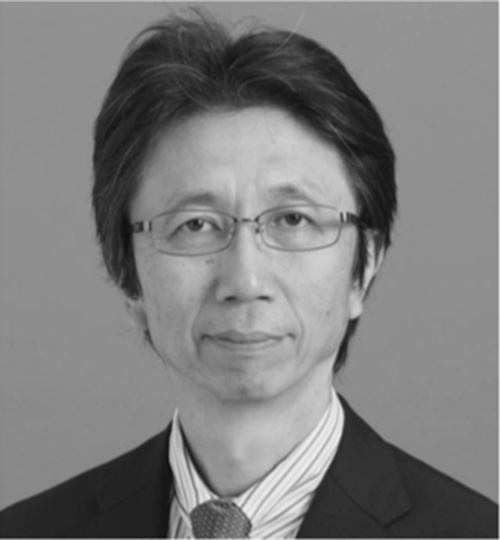 Dr. Yamanaka graduated from the Department of Instrument Engineering, Faculty of Engineering, Keio University in March 1981, and gained his masterfs degree at the same university in March 1983, whereupon he joined the Switching Systems Department, Musashino Electrical Communication Laboratory of Nippon Telephone and Telegraph Public Corporation (now NTT). Since then, he has been consistently engaged in R&D of high-speed broadband network technology.
As a student at Keio University, he studied devices in applied physics, such as organic semiconductor lasers and energy transfer lasers. After joining NTT, he changed research issue and developed a switching system that combined optical and electrical technologies. He received his Ph.D. from Keio University in 1991.
Dr. Yamanaka graduated from the Department of Instrument Engineering, Faculty of Engineering, Keio University in March 1981, and gained his masterfs degree at the same university in March 1983, whereupon he joined the Switching Systems Department, Musashino Electrical Communication Laboratory of Nippon Telephone and Telegraph Public Corporation (now NTT). Since then, he has been consistently engaged in R&D of high-speed broadband network technology.
As a student at Keio University, he studied devices in applied physics, such as organic semiconductor lasers and energy transfer lasers. After joining NTT, he changed research issue and developed a switching system that combined optical and electrical technologies. He received his Ph.D. from Keio University in 1991.In 1996, Dr. Yamanaka was selected as a distinguished researcher, a title given to a very small number of researchers doing outstanding R&D at NTT Laboratories, and he undertook a number of international research projects. In March 2004, he became a professor of the Department of Information and Computer Science, Keio University. He concurrently served as deputy director of the Keio Leading-edge Laboratory of Science and Technology (KLL) from April 2014 and as its director from 2018. He has conducted education and research on backbone networks, smart networks and optical communication systems, and promotion of industry-academia-government collaboration. In recent years, he has also been devoting his energies to studying services and applications on a super-high-speed network.
Currently, he is involved in joint Japan-U.S. R&D in the areas of advanced energy control, smart societies, and a platform and testbed for autonomous driving vehicle.
During Dr. Yamanakafs time at NTT Laboratories, he drove research on super-high-speed packet networks and photonic networks, and established fundamental technology for broadband networks.
For his papers on super-high-speed packet systems, he received the Best Paper Award three times at IEEE ECTC (40th, 44th, and 48th), which is one of the top-level IEEE conferences. He was the first Japanese recipient of this award. He also received the Best Paper Award from IEEE CPMT, which is best paper of the IEEE transactions. He has received accolades from a number of Japanese scientific institutes, including a Best Paper Award (1998) from the IEICE.
Not only was his research highly regarded international academia but the technologies he had developed were licensed for application by both Japanese companies and international giants such as IBM and Motorola amid a wave of R&D efforts to improve the speed performance in super-computers, workstations, and terabit routers. They were also introduced into NTTf real commercial communications systems. Thus, Dr. Yamanaka has produced significant achievements in areas ranging from basic research through commercial development. He is working on a super-high-speed system that combines optical and electric technologies. This is joint Japan-U.S. research funded by the National Science Foundation (NSF) in the U.S.A. and the National Institute of Information and Communications Technology (NICT) in Japan. It is one of the representative global research endeavors taking place in Japan.
Dr. Yamanaka has been an energetic participant in scientific community activities. He has contributed to development of IEICE activities by serving in several positions, including chair of the Tokyo Section, director of Journal and Transactions, director of Conferences, Student Activities and Education, chair of the Technical Committee on Photonic Network, secretary in charge of international exchange, and secretary in charge of editorial in the Communications Society. He has also made significant contributions in the international sphere, particularly in promoting international collaboration in the Asia-Pacific region, serving as director of the IEEE CPMT Society, and as Asia-Pacific director of the IEEE Communication Society. He was instrumental in introduction of the IEEE/IEICE Sister Society Program. In addition, he served, over many years, as executive director of the ISOCORE, which is a U.S. consortium for verifying interconnections, and as general manager of the Keihanna Info-Communication Open Laboratory of the Ministry of Internal Affairs and Communications. Clearly, he stands out as an internationally active researcher involved in industry-academia-government collaboration consortiums.
In recent years, Dr. Yamanaka has been promoting industry-academia collaboration and implementation of university technologies in society. As director of the KLL, he has been responsible, over several years, for KEIO TECHNO-MALL, which is the largest industry-academia collaborative exhibition among those held by Japanese universities in the field of science and technology. Thus, he is a prominent promoter of medical science-engineering collaboration and open innovation. Recently, he has been fostering venture businesses originating out of universities. In light of these activities, Dr. Yamanaka is a leading international authority in the communication field, particularly with regard to super-high-speed network technology, which has made the current cloud services possible.
As shown above, his achievements and contributions to the electronics, information and communication field are truly outstanding, and we are convinced that he is eminently qualified to receive the Distinguished Achievement and Contributions Award.